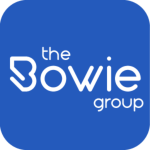Last week Oculus declared that VR was here now, and I agree. Oculus has re-energized the consumer market with the Quest and the enterprise market is seeing the benefits of VR training and starting to take off. In addition to the Quest Link and hand tracking enhancements coming to the Quest, Oculus also announced that their VR Business Platform is coming this November. This is a much-needed platform and I am pleased to see they are taking the enterprise market seriously.

The ability to put the device in kiosk mode, distribute training content to individual users and pull reporting is very important for any enterprise learning and development team. The integration with MobileIron and VMWare Airwatch is also a welcome addition as may enterprises already have relationships with these device management platforms. One of the biggest challenges I faced when deploying VR training to the masses was managing and controlling the device environment and the Oculus business platform seems to solve for that. Managing just a few devices can be challenging but at the scale of 100s and 1000s of devices it gets very tricky.

However, once you start breaking down the cost, I get a little concerned. First, the $15 a month per device on top of your MDN (MobileIron or AirWatch) seems a bit steep. Secondly, the enterprise device cost is far higher than the same device in the consumer market. For example, the GO cost $599 for the 64 GB device for the enterprise and just $249 for the consumer device. The Quest is just $499 for the 128 GB consumer device and a whopping $999 for the enterprise addition. To be fair both do include the first year of the business platform at $180, however that is still an increase of $170 and $320 respectively.

If you look at Oculus competitors, the enterprise device pricing is not that far off. The HTC Focus+, a competitor to the Quest, for example, is $799 without the business platform. The Pico Interactive G2, a competitor to the GO, starts at $299 without the business platform. If you add the $180 for the first year you are within range of the Oculus pricing. (HTCs Active Advantage Platform is just $149)
That said, I think the harder sell is the fact the consumer price is so low. I understand that Oculus is selling the devices to consumers as lost leaders in the hopes to make up the difference with software sales. Yet, as I help other companies launch VR in the enterprise or speak with many companies developing content, they always quote the consumer pricing, even listing the smaller versions of the hardware at $199 and $399 for the GO and Quest respectively. This seems to only confuse the buyers and it makes it a tougher sell once they realize the true cost. This will likely encourage business customers to try and buy Oculus devices outside their business program and potentially provide a slower path to scaling.
Again, I welcome the platform from Oculus. As someone who has firsthand experience a deploying 100s of headsets, this will make it much easier. However, the sales pitch is a little harder trying to navigate the confusing pricing and opens the door for HTC and Pico to be serious competitors as they both have business platform solutions and partners already.
